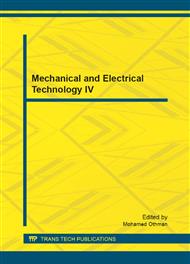p.2629
p.2634
p.2638
p.2643
p.2648
p.2653
p.2658
p.2663
p.2667
Wavelet Based Separation for Synthetic Topographical Characterization of Surface Prepared by Abrasive Water Jet
Abstract:
To study the synthetic topographical characterization of surface created by abrasive water jet (AWJ) and carry out a detailed research for the process of surface creating, this paper researches the surface signals obtained both by contact profiler and a new developed optical instrument. Through wavelet decomposition and re-construction of surface signal, surface features, such as form error, waviness and roughness are separated rationally. Some fundamental issues, such as the selection of wavelet bases and the determination of wavelet decomposition level are discussed in detail.
Info:
Periodical:
Pages:
2648-2652
Citation:
Online since:
November 2012
Authors:
Keywords:
Price:
Сopyright:
© 2012 Trans Tech Publications Ltd. All Rights Reserved
Share:
Citation:


